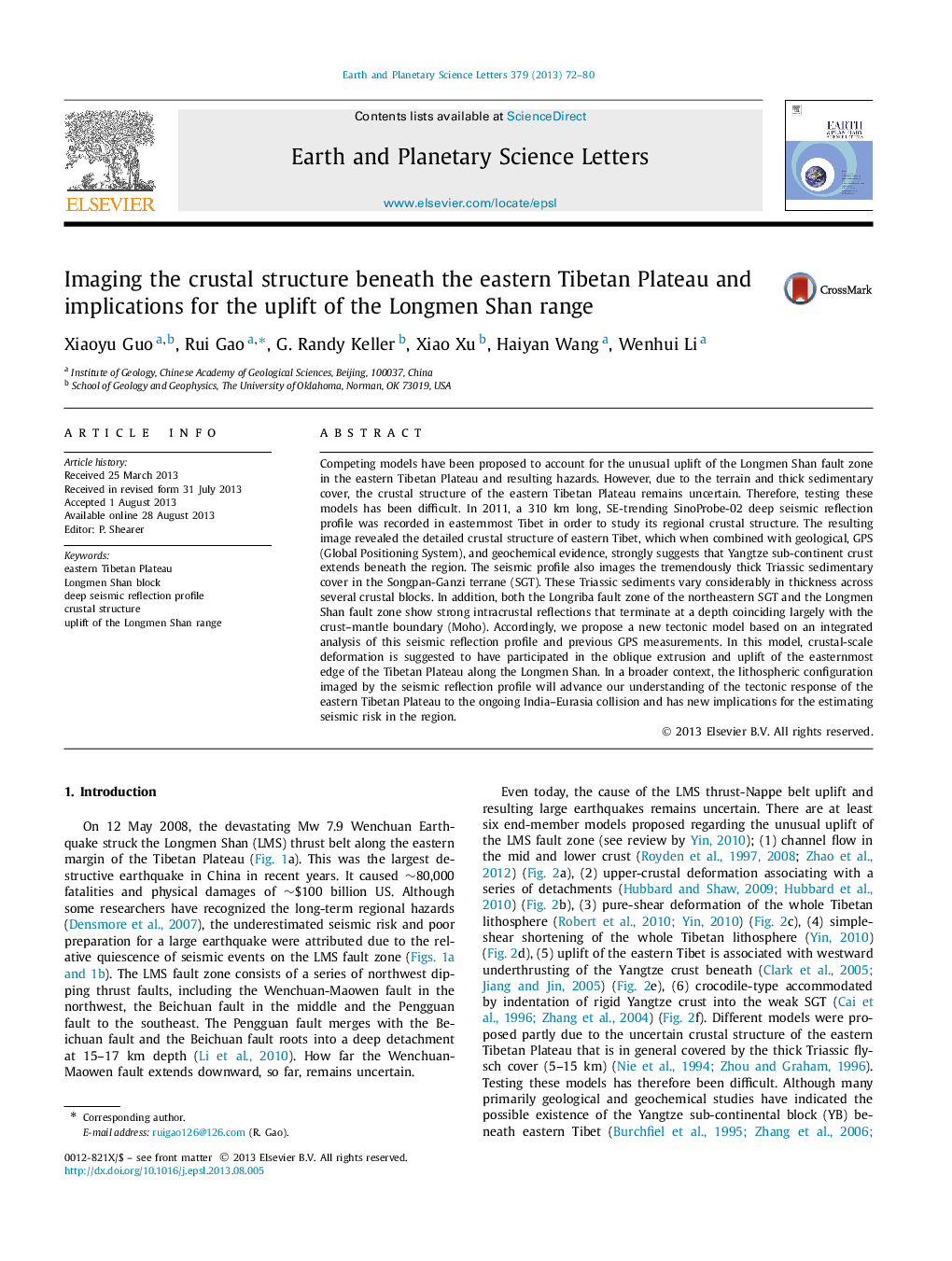| Article ID | Journal | Published Year | Pages | File Type |
|---|---|---|---|---|
| 6430061 | Earth and Planetary Science Letters | 2013 | 9 Pages |
â¢A 310 km-long deep seismic reflection image is applied.â¢This seismic profile produced an impressive image of the deep structure down to the Moho.â¢Results support that the Yangtze crystalline crust exists beneath the eastern Tibetan Plateau.â¢A new crustal-scale model is proposed to explain the unusual uplift of the Longmen Shan range.
Competing models have been proposed to account for the unusual uplift of the Longmen Shan fault zone in the eastern Tibetan Plateau and resulting hazards. However, due to the terrain and thick sedimentary cover, the crustal structure of the eastern Tibetan Plateau remains uncertain. Therefore, testing these models has been difficult. In 2011, a 310 km long, SE-trending SinoProbe-02 deep seismic reflection profile was recorded in easternmost Tibet in order to study its regional crustal structure. The resulting image revealed the detailed crustal structure of eastern Tibet, which when combined with geological, GPS (Global Positioning System), and geochemical evidence, strongly suggests that Yangtze sub-continent crust extends beneath the region. The seismic profile also images the tremendously thick Triassic sedimentary cover in the Songpan-Ganzi terrane (SGT). These Triassic sediments vary considerably in thickness across several crustal blocks. In addition, both the Longriba fault zone of the northeastern SGT and the Longmen Shan fault zone show strong intracrustal reflections that terminate at a depth coinciding largely with the crust-mantle boundary (Moho). Accordingly, we propose a new tectonic model based on an integrated analysis of this seismic reflection profile and previous GPS measurements. In this model, crustal-scale deformation is suggested to have participated in the oblique extrusion and uplift of the easternmost edge of the Tibetan Plateau along the Longmen Shan. In a broader context, the lithospheric configuration imaged by the seismic reflection profile will advance our understanding of the tectonic response of the eastern Tibetan Plateau to the ongoing India-Eurasia collision and has new implications for the estimating seismic risk in the region.
